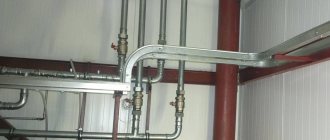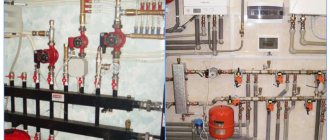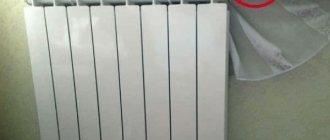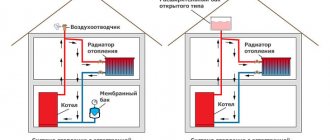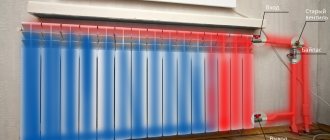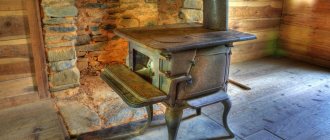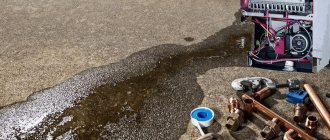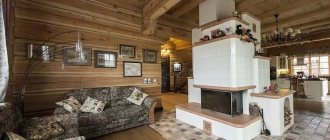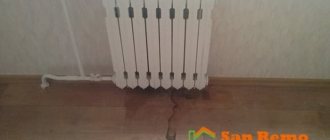Which houses are best suited for heating devices?
Depending on the building materials, a temporary dwelling may or may not be suitable for heating. For example, wooden houses built from panel panels cool down very quickly.
Such a structure must be additionally insulated. Don’t forget about fire safety when installing heating in a wooden country house. Another thing is houses built of brick, shell rock or concrete . They are permanent buildings and are ready for year-round visits. The choice of heating scheme in such houses depends on the communications passing nearby.
Metal stoves
The efficiency of a metal furnace depends on the density of the fuel. There should be no free space between solid elements. Firewood inside a metal stove must be placed in a cage. The denser the filling, the longer it will burn, providing heat to the entire room. When properly stacked with firewood, a metal stove retains heat for 24 hours.
As wood smolders, it releases heat energy, and the stove has a special compartment for air supply. The characteristics of the metal affect heat transfer and thermal conductivity. Despite the weak accumulation of heat, the thermal conductivity of the metal is high. This stove produces heat efficiently, is compact, and can be installed anywhere. Cast iron stoves are reliable and last longer than products made from other materials.
Advice! You can buy a stove of an unusual shape to decorate your country house setting.
Metal stoves are not installed in large houses, because they will not provide a comfortable temperature in a building with a large area. Their safety level is lower than that of stone or brick products, but they are quite suitable for a small dacha. You need to follow safety precautions and stack firewood correctly.
Suitable heating options for a summer house
Conventionally, they can be divided into three types:
- oven;
- water;
- electric.
Modern stove heating is achieved using a cast iron or steel stove .
a furnace made of refractory bricks , since it should be taken into account at the design stage and installed together with the construction of internal walls.
If you have to choose heating in your dacha without gas, then this option turns out to be the most economical. The advantage of this type of heating is the ability to heat the room to an optimally comfortable temperature in just 40-50 minutes. Stove heating has disadvantages: it is necessary to periodically (approximately every 4-6 hours) add fuel and clean the ash pan from combustion products; you also need to control the draft.
However, this device has undoubted advantages: simplicity and speed of installation, no need to worry about equipment failure, freezing and rupture of pipes, as in water heating.
The second type is water (steam) heating . In terms of comfort and design, it can be compared with a city one. The principle of water country heating is that the coolant - hot water (or antifreeze) is preheated in the boiler - passes through pipes into radiators or convectors and releases heat, heating the rooms. The disadvantages of such heating are the complexity of the circuit and the need to purchase expensive equipment.
The advantages of this type of heating: comfort of use and the ability to choose one of the available boilers:
- gas;
- electric;
- solid fuel.
It should be noted that gas heating boilers for dachas, although preferable, require mandatory approval before installation from the gas service.
The simplest type of country heating is electric . This is implemented by installing heaters, convectors or warm infrared floors. Pros: their installation does not require major repairs, the equipment does not require maintenance, it connects and works as needed. Cons: in case of power outages, it is better to have an alternative heat source, for example, the same stove.
Reliable solid fuel units
The cottage can be heated without gas. In this case, you will need firewood, coal, briquettes, shavings, pallets, straw, sawdust or peat. Solid fuel boilers are gaining popularity as other sources of thermal energy periodically become more expensive. The units operate stably only in conjunction with a water coolant delivery system in all rooms of the dacha.
Heating a living space with a solid fuel system is beneficial, since the equipment is affordable, reliable, and easy to maintain.
Affordable solid fuel boiler
How to choose the right heating system for your dacha
The first step is to determine the availability of fuel. If there is a gas main nearby, it would be a sin not to take advantage of it. Gas is one of the cheapest types of fuel. Accordingly, gas heating for a summer house is the best option in terms of quality and affordability.
If the networks do not pass close, then solid fuel and electricity remain. It is better to give preference to either a cheaper or safer type. Much depends on the materials from which the house is made.
For example, it is unsafe to install stove heating , since materials located near the stove may ignite. At the same time, infrared floors are best installed under laminate, since wooden floors have high heat-insulating properties. In addition, they dry out from heating and become deformed over time.
We can draw conclusions:
- For a house made of brick or concrete, water or stove heating ;
- for a wooden house it is better to install water or electric heating . When using the oven, you should take safety precautions and carefully isolate it from heated metal surfaces.
What type of fuel can be called the most accessible and cheapest?
A dispute often arises as to which fuel is the cheapest in the absence of mains gas. We are looking for the cheapest heating without gas based on the experience of our forum users.
ArtashirFORUMHOUSE user
I decided to make an approximate calculation of the costs of operating different types of heating equipment over a period of 15 years, including the cost of energy, for the following heating systems:
- gas (gas boiler);
- heating with wood;
- heating using wood pellets;
- electric (electric boiler).
The forum member used the following as initial data:
- Residential building area - 100 sq.m;
- The duration of the heating period is 8 months;
- The average power of equipment during the heating period (efficiency) is 50%;
- Specific power of the climatic zone is 1.5 kW (Khanty-Mansiysk Autonomous Okrug - Yugra).
Hot water supply and gas stove are not taken into account in the calculations.
And this is what happened.
As can be seen from the tables presented, the most expensive heating is electricity at a daily rate. The cheapest is main gas, solid fuel is in the middle of this rating. It is also necessary to familiarize yourself with the results of a similar calculation by a user of our site under the nickname bkostik.
BkostikFORUMHOUSE user
I made calculations in relation to St. Petersburg.
As can be seen from the table, heating with diesel fuel and bottled gas is one of the most expensive, but heating with electricity, when using the night tariff, is not so expensive. However, this does not mean that everyone can install an electric boiler for themselves, because... Not in all settlements the required power can be allocated to a house. In order for heating a house without gas, with electricity alone, to be truly profitable, a number of conditions must be met. Namely:
The house must be well insulated;
- Heat loss through building envelopes (walls, floors, roofs) as well as windows and doors should be minimized;
- A heat accumulator is required.
Stove heating: installation rules
This heating installation in a country house has some limitations. It is best to install a cast iron firebox in utility rooms or living rooms, choosing walls at least 500 mm thick adjacent to the interior rooms. It is not recommended to install stoves in bedrooms to avoid carbon monoxide poisoning. It is not advisable to install the firebox in a draft, between adjacent windows or doors: otherwise it will start to smoke. It is not recommended to hammer into a wall if there is no chimney; it is better to complete it.
It is correct to place the firebox on a brick bed laid in three rows, especially if it does not have a stand. A chimney made of sheet material or cast iron is installed above the stove. To avoid fire, you need to cover the pipe with thermal insulation at the points of contact with the ceiling and roof. Depending on the model, such a stove heats an area from 15 to 90 square meters. m. It can be installed in one day, if you do not use decorative finishing.
Some useful tips
If your home maintains a constant temperature of about 5©, this is enough to “start warming up”. Stable temperatures will be ensured by high-quality insulation of doors, windows, roofs, floors and ceilings. They cannot be neglected: this will lead to large heat losses. Heating systems will not be able to warm up a room that does not have reliable insulation.
Use electric heaters with temperature sensors. There are safe devices that can be left unattended for a short time. In winter, save heat and do not heat unused rooms. For wintering at the dacha, a heated kitchen and one room are enough. Place other parts of the house in case of emergency.
When installing a boiler or furnace, learn how to properly add and use fuel. This will help you retain heat and maximize the efficiency of your heating system.
There are many ways to heat private homes. Each of them has its own specifics. Before installing a boiler or furnace, you must take into account all the details of their operation. You can make a simple stove yourself, but to install a complex installation it is better to invite a specialist.
Water heating of a country house
This type of heating is the most comfortable due to the fact that the heat emanating from the radiators is distributed evenly throughout the room. It is advisable to choose it for houses with an area of 100 m2 or more , when stove heating is not enough and electric heating is expensive.
The do-it-yourself dacha heating scheme boils down to the following: water is heated in the boiler, which begins to circulate with the help of a pump, flowing through the pipes into the radiators. To prevent the liquid expanding from heating from rupturing the pipes, it is necessary to connect a container to the system - an expansion tank of an open or closed (membrane) type.
It is possible to install a water heating system without a pump - of the forced type, but it is less reliable and not justified, since heating the room with its help is many times slower. Sometimes it takes a day for the room to get a little warmer. Therefore, we will not consider it.
So, to set up the system you will need to purchase:
- radiators;
- pipes suitable for them;
- expansion tank;
- pump;
- shut-off valves, corresponding keys;
- gas, electric or solid fuel boiler depending on the availability of fuel.
The most suitable heating radiators for summer cottages are aluminum or biometallic . They weigh little and heat up quickly. They are easy to transport with your own transport and connect to polypropylene pipes, which look decent, are inexpensive and do not require painting.
Installation recommendations
When placing radiators on brackets, it is necessary to maintain a distance of at least 70 mm to the window sill, 100 mm from the floor and 30 to 50 mm to the wall. The film is removed from the batteries after installation. For aesthetic reasons, it is better to install supply pipes level. The expansion tank is located next to the boiler, the pump in front of it.
It should be taken into account that when the house is not heated, the water in it will freeze, which can lead to rupture of pipes and failure of the system. To prevent this from happening, it is recommended to either drain the water when leaving or fill the containers with antifreeze.
Heat guns
Electric guns do not contain a fuel tank; therefore, they do not require a supply of fuel or refueling; do not produce combustion products, which means they do not require the installation of a chimney or ventilation. Thus, these are environmentally friendly, lightest (weigh about 2–7 kg) and extremely easy to use devices, used at home more often than others.
They are safe for heating rooms where people are; they do not have problems starting in the cold, like diesel units, and, since there is no need to replenish the energy source, they can operate in continuous mode for as long as required (usually up to 22–24 hours, after which a two-hour break is needed). The guns are equipped with a thermal relay, which allows you to set the required temperature (usually up to +35...40⁰С) and turns off the heating element when it is reached, as well as an overheat protection sensor. To be able to maintain heating at a given level, the devices are equipped with thermostats.
Design and operating diagram of an electric heat gun
Household appliances have a power of up to 5 kW and are powered by a single-phase 220 V network or battery. The regulation system is stepwise: in order to quickly fill the room with heat, they are first turned on to maximum, and then the power is transferred to an intermediate level to maintain a comfortable temperature. Many models can function simply as fans without heating the air.
Guns with a cylindrical body are more effective in terms of creating a directed heat flow, which is ensured both by their “barrel-shaped” shape and by a specially adapted stand with clamps for this purpose, which allows you to direct the air stream to the desired area - up to the “vertical flow” position, for example , for drying the ceiling. Such devices, as a rule, are equipped with a tubular heater twisted into a spiral - it reaches the set temperature faster than “loop” type heating elements.
Many cylindrical guns allow wall mounting.
The legs and stands of units intended for floor installation (this includes all rectangular models) are usually equipped with rubber pads to reduce vibration. The well-thought-out design of the fan and internal fastening units serves the same purpose. As for the noise produced by electric heat guns, for the “loudest” of them it reaches 55–58 dB, which is quite comfortable for daytime. It is clear that a device that drives a powerful stream of air through itself cannot be absolutely silent, but if the issue is especially acute, then experts recommend choosing rectangular devices - due to the aerodynamic features, they work quieter than cylindrical ones.
To increase reliability and safety in operation, as well as to improve heat transfer, manufacturers implement such design solutions in their devices as double-walled steel housings, copper windings of motors, and protective screens made of heat-resistant galvanized steel. They provide the function of blowing cold air onto the heating elements after switching off; The devices are equipped with dust and waterproof fans and control units; They use highly efficient heating elements in a ceramic shell or stainless steel heating elements with a special coating - they do not cause a lack of oxygen in the air and do not emit the characteristic unpleasant smell of hot dust. For fire safety purposes, devices are painted with heat-resistant enamel and the cross-section of the wiring is increased. Some manufacturers produce models in durable plastic housings; in this case, they are equipped with an internal steel casing that prevents heating of the outer walls.
Electric heat guns can be used not only in closed but also in open spaces. Although the heating efficiency will be relatively low, on cool days they will create conditions for comfortable spending time in a summer gazebo or on the terrace. In the spring, they are used for heating small greenhouses, and, for example, devices with directed flow are quite suitable for drying clothes under a canopy
Electric guns have electrical protection class I, and most of them are equipped with a power cable with a power plug. The degree of protection of the structure from moisture and solid particles is standard for household appliances of this type: IP20 (21, 24). The efficiency of the devices is 100%. Prices for products from both domestic and foreign brands are quite affordable and range on average from 1.5 to 5 thousand rubles. Manufacturers' warranty periods vary markedly - sometimes 1 year, sometimes 5, so you should pay attention to this when purchasing a device.
Electric gun KALASHNIKOV KVF-E3-11, power 3 kW. Price 3350 rub.
Electric heat gun BALLU BKN-3, 2200 W. Price 2000 rub.
Electric gun ZUBR ZTP-24, power 24 kW. Price 12,300 rub.
Timberk TIH R5 5M gun, power 5 kW. Price 5400 rub.
Electric gun Timberk TIH Q2 6M, power 6 kW. Price 5900 rub.
Electric gun BALLU BHP-P2-3, power 3 kW. Price 4000 rub.
Electric gun RESANTA TEP-5000K1, power 5 kW. Price 4200 rub.
About other types of guns - in the material “Are you using a gun?”.
5
Electric heating installation
Installation of heaters and convectors
The easiest and fastest way to keep warm in a country house is to turn on the convector or infrared emitter . A very good option for a summer house is an oil heating radiator. These devices very quickly raise the room temperature to a comfortable level.
One could stop at this equipment if it were not for health concerns. The fact is that in a cold room your feet freeze more than outside. warm floors in the house . They allow you to warm up much faster after a long stay in the fresh air, and therefore there is less chance of catching a cold.
Installation of heated floors
You can install infrared heated floors at any time of the year, even on old flooring. Using this method, installation of heating for a dacha is carried out without much difficulty. To do this, you need to purchase infrared film, heat and waterproofing, a thermostat, and a coating (preferably laminate). If you do not want to contact specialists to install such floors, then you should follow these steps:
- clean the floor surface, it must be perfectly flat;
- install a thermostat in the wall;
- lay thermal insulation and secure it with construction tape;
- lay the film strips in accordance with the instructions (the area where the furniture will be should be left without an emitter);
- fasten them together;
- Insulate cut areas with bitumen tape;
- connect electrical wires to the edges;
- bring them to the thermostat; check the system for serviceability;
- lay waterproofing;
- cover the floor with carpet or laminate.
Method 6 - electrode boiler
Inside the electrode boiler there are electrodes, which act as a heating element. When current passes through a liquid, heat is generated. This means that in electrode boilers there is no actual heating element on which scale could form. The absence of scale will greatly facilitate operation.
Electrode boilers are highly reliable and operate much longer than tubular heaters. In addition, they are small in size, which is very convenient for a small residential building. The disadvantages include high requirements for the liquid used as a coolant. Water must undergo special treatment. Often, antifreeze generally must be exclusive - from the device developer.
The photo shows an electrode boiler Galan, Russia
Recommendations on how to save on heating a country house
It has been observed that heat leaks affect the speed and efficiency of heating rooms. Up to 20% of the heat usually escapes through old wooden double-glazed windows. Through cold walls - up to 40%, through doors - up to 20%, through the floor - 10%. Accordingly, if before the onset of cold weather you fix leaks and insulate the walls, then within an hour you will be able to feel in a country house just like in a city apartment.
And further. The most economical heating for a summer house in terms of fuel consumption is gas . Therefore, if it is possible to connect to the highway, then it is better to choose it as a priority.
